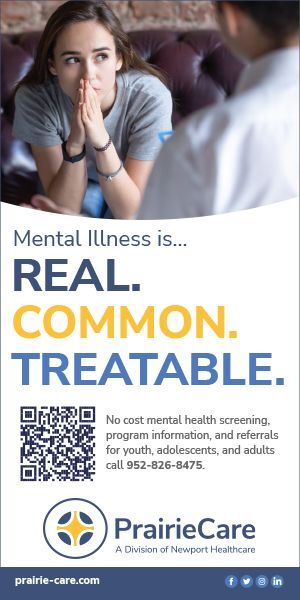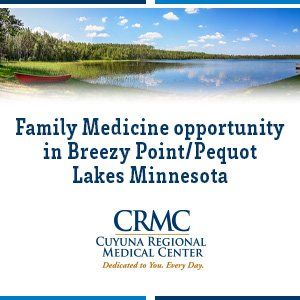n August 1, 2023, a transformative shift in health care communication took place as the Minnesota CANDOR Act (bill SF2909) came into effect. This legislation, inspired by similar efforts in other states, aims to revolutionize the way physicians and patients navigate the aftermath of adverse medical events (AMEs). With the increasing frequency of nuclear verdicts, Candor is a welcome new tool.
cover story one
The Minnesota CANDOR Act
Addressing adverse events
By Nels E. Dyste
CANDOR stands for Communication and Optimal Resolution and is an outgrowth of a project started primarily in academic settings in the late 1980s. Utilized within risk management programs and related procedures at the University of Michigan Health, the VA Medical Center at Lexington, Kentucky, and the University of Illinois Medical Center at Chicago, unique programs were built in response to local jurisdictions, hospital systems and community needs. This early work was called the Seven Pillars Process and was pioneered by Dr. Tim McDonald at the University of Illinois Medical Center at Chicago. Runaway malpractice insurance settlements and costs were a major driver of the research, but most important and at its core is improved health care and stronger physician-patient relationships.
The components of Seven Pillars are:
- Patient safety incident reporting—Reinforce a culture that encourages timely reporting.
- Investigation—Conduct a preliminary review of the incident to determine if patient harm occurred and if a root causes analysis should be performed; the investigation should examine the system as well as provider performance.
- Communication and disclosure—Maintain ongoing communication with the patient and family throughout the process; providers involved should be trained in communication skills required in these situations, such as empathy, sincerity, active listening, patience and tact.
- Apology and remediation (if appropriate)—Ensure that when patient harm did occur, saying “we’re sorry” includes subsequent action such as explaining what is being done to prevent similar outcomes and offers of compensation, if warranted.
- System improvement—Identify and implement system improvements aimed at preventing a recurrence; patients and families may be invited to participate in this aspect of the process.
- Data tracking and performance evaluation—Collect data associated with the incident and utilize this for internal quality assurance, research and dissemination to relevant stakeholders.
- Education and training—Build a robust education platform based on analysis of adverse events, and utilize case-based, interactive education for all members of the health care team.
There is a significant correlation between the frequency of adverse events and malpractice claims.
Results of the early implementation of these approaches were mixed but achieved the main goals, which were surprisingly simple and straightforward. When unintended outcomes arise in the course of patient care, those who probe the event must create a space to investigate what happened, be transparent with the patient, create an opportunity to learn from the incident to prevent similar harm and provide compensation when warranted.
Continued Development
Unsafe health care processes harm an alarming number of patients every year with more than 1.5 million preventable infections occur annually among in-patients. This statistic represents only one type of patient harm. Unsurprisingly there is a significant correlation between the frequency of adverse events and malpractice claims.
The National Institutes of Health (NIH) took up this study, and the Agency for Healthcare Research and Quality (AHRQ) followed, both issuing papers and guidelines that encouraged a new approach to AMEs. What evolved from this work, the CANDOR process, is designed to improve patient safety through an empathetic, fair and just approach to medical errors and promote a culture of safety that focuses on caring for the patient, family and caregiver, using in-depth event investigation, analysis and resolution.
The Minnesota Act
The recent Minnesota legislation, closely patterned on a similar bill passed in Colorado, defines a “health care adverse incident” as an objective and definable outcome arising from or related to patient care that results in death or physical injury to the patient. It defines “health care provider” as a person who is licensed, certified, registered or otherwise permitted by state law to administer health care and practices at a health facility. A “health care facility” is in part defined as a licensed hospital or outpatient surgical center; a medical, dental or health care clinic; a diagnostic laboratory; or a licensed birthing center. The act specifies that it only applies only to care delivered after Aug. 1, 2023, and it is not required that health care providers follow the CANDOR procedure, though there are many compelling reasons concerned with limiting liability in the event of an AME that would strongly encourage adoption of the process. It is also not required that patients participate in the process, and there are numerous guidelines to be followed, none of which holds anyone to anything that is not mutually agreeable. The guidelines and procedures of the act apply specifically to avoidable death or permanent disability, but the approach and thinking behind it should inform response to any instance of an AME.
Adoption and System Implementation
AHRQ offers an extensive toolkit as a reference for organizational leaders who are committed to improving their response to unexpected events that harm patients. The guide presents these leaders a clearly and highly detailed explanation of the CANDOR process, implementation phases, resources and responsibilities to support successful implementation at their organization. It is recommended that individuals who are responsible for leading implementation consult this guide. Leaders who have accepted responsibility for implementing the CANDOR process are encouraged to share this guide with all team members, including the patient and family advisors.
Organizations committed to the program should expect to implement a number of new practices to improve communication and response to adverse events. The guide provides additional details and guidance on several important activities including:
- Forming an active, multidisciplinary project team that includes clinicians, support staff, and the patient and family advisors.
- Conducting training sessions on the CANDOR process for all project team members.
- Conducting ongoing communications and education with staff, patients, and families about the organization’s commitment to the CANDOR process.
- Engaging staff, patients, and families in the planning, implementation, and evaluation of the CANDOR process.
The CANDOR process is designed to improve patient safety.
Patient Implementation
Per the Minnesota Act, written notice must be sent to the patient within 365 days of the incident.
This time period is defined as within 365 days from the date the health care provider or health facility knew, or should have known, of the health care adverse incident.
The notice must include specific details about the patient’s rights and the nature of the communications and discussions under the Minnesota CANDOR Act.
The notice must include the following:
- The patient’s right to receive a copy of the medical records related to the incident and to authorize the release of the records to a third party;
- The patient’s right to seek legal counsel and have legal counsel present throughout the open discussion process;
- A copy of the relevant statute of limitations with notice that the time for a patient to bring a lawsuit is limited and will not be extended by engaging in an open discussion under the act unless all parties agree in writing to an extension;
- Notice that if the patient chooses to engage in an open discussion with the health care provider, health facility, or jointly with both, all communications made in the course of the discussion under the act, including communications regarding the initiation of an open discussion, are: privileged and confidential; not subject to discovery, subpoena, or other means of legal compulsion for release; and not admissible as evidence in a judicial, administrative or arbitration proceeding arising directly out of the adverse incident.
- An advisement that any communications, memoranda, work product, documents, or other material that are otherwise subject to discovery and not prepared specifically for use in a CANDOR open discussion are not confidential.
If the patient agrees in writing to engage in an open discussion, the patient, health care provider, or health facility may include other persons in the open discussion process, who must be advised of the privileged and confidential nature of the communications.
Under the Minnesota CANDOR Act, health care providers and facilities may investigate, disclose and communicate about how the incident occurred and what steps are being taken to prevent a similar outcome in the future.
The health care provider/facility that agrees to engage in an open discussion may:
- Investigate how the incident occurred and gather information regarding the medical care or treatment.
- Disclose the results of the investigation to the patient.
- Communicate to the patient the steps that will take place to prevent future occurrences of the incident.
As part of their assessment, health care providers and facilities can determine whether or not an offer of compensation is warranted. If no offer of compensation is warranted, the provider or facility shall orally communicate that decision to the patient.
If the provider or facility determines that an offer of compensation is warranted, the provider or facility shall provide the patient with a written offer of compensation.
If an offer is made and the patient is not represented by legal counsel, the provider or facility is required to:
- Advise the patient of the patient’s right to seek legal counsel regarding the offer of compensation and encourage the patient to seek legal counsel; and
- Provide notice that the patient may be legally required to repay medical and other expenses that were paid by a third party on the patient’s behalf, including private health insurance, Medicaid, or Medicare, along with an itemized statement from the health provider showing all charges and third-party payments.
- A health care provider/facility may require the patient, as a condition of an offer for compensation, to execute all documents and obtain any necessary court approval to resolve a health care adverse incident.
Looking Ahead
The Minnesota CANDOR act sets up a legal “safe space” for patients and providers to openly discuss the facts of an adverse event, ask questions and improve patient safety to reduce and prevent similar events from occurring. Patient compensation is still available if warranted, but this no longer serves as the primary motivator for resolution.
Though the law does not require patients to participate in the CANDOR process, anyone can enter into a less adversarial method for understanding what might have happened that caused or resulted in the adverse medical event even in a state without a formal CANDOR law. In fact, there are a number of health care facilities that have already implemented a CANDOR process prior to some of the legal protections. Each health care institution has the flexibility to implement its own process for how to respond to an adverse event, and now with expanded legal protections, providers and patients can realize the benefits of the process. Iowa, Colorado and Utah all have similar legislation that created a protected CANDOR process.
While it’s too early to measure the full impact of the Minnesota CANDOR Act, its promise is undeniable. It signifies a commitment to a future where adverse medical events are more swiftly met with understanding, transparency, and a shared determination to prevent them from happening again.
Nels E. Dyste, is vice president at Dyste Williams, an independent insurance agency serving clients in the Upper Midwest.
MORE STORIES IN THIS ISSUE
cover story one
The Minnesota CANDOR Act: Addressing adverse events
By Nels E. Dyste
cover story two
Unveiling the Future: Artificial Intelligence in Spine Surgery
By Omar Ramos, MD




















